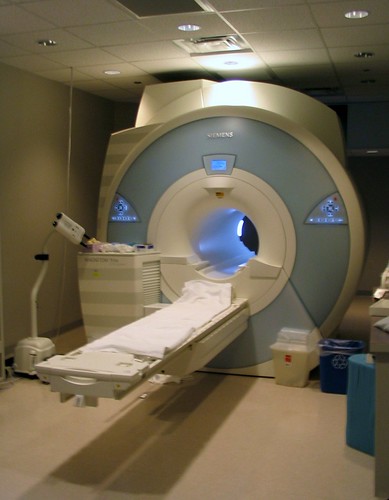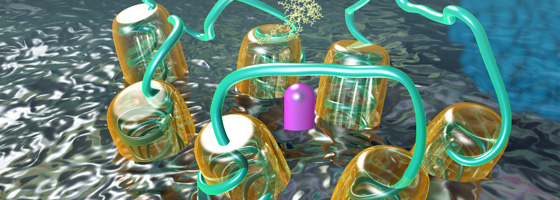10.29.2007
Cognitive Labs: More Visitors Blow though the turnstiles.
>


More and more people are playing our games. We've broken through half a million monthly visits and are heading up from there.
I checked and we're actually up more than 40 fold, 40X or 4,000 percent since November 2005.
I think there is going to be a major push in human cognitive evolution in the coming years, diven by three vectors: the first is the focus on cognitive renewal itself. Second, the increasing awareness of the environment demo'd by Al Gore and others argues for more energy thrift and self-sufficiency, which may lead to an inward focus on locality and paradoxically and thirdly, the prophesied 'digital brain' being created between social networks and IM.
It's Lascaux Cave or predynastic slip ware pottery from Egypt (when people suddenly started painting recurring geometric shapes) all over again.
Labels: algore, blogs, coglabs, im, lascaux, november, visitors

10.24.2007
The power of positive thinking lights up the brain
>


Thinking that things are possible in the future seems to light up a small area in the front of the brain. People who are depressed may not exhibit the same signs....according to the journal Nature.
A person's optimism in the future seems to be controlled by a small front part of the mid-brain, according to a study that used brain imaging.
That area deep behind the eyes activates when people think good thoughts about what might happen in the future. The more optimistic a person is, the brighter the area showed up in brain scans, the scientists reported in a small study published online Thursday in the journal Nature.
That same part of the brain, called the rostral anterior cingulate cortex (rACC), seems to malfunction in people suffering depression, said the study co-authors, Elizabeth Phelps of New York University and Tali Sharot of University College London.
Researchers gave 15 people functional magnetic resonance imaging scans while they thought about future possibilities. When the participants thought about good events both the rACC and amygdala, which is involved in emotional responses including fear, were activated. But the correlation with optimism was biggest with the cingulate cortex.
The same study also found that people tended to think that happier events were closer in time and more vivid than the bad ones, even if they had no reason to believe it, Phelps said.
Psychologists have long known people have an "optimism bias," but the new study offers new details.
When researchers asked the subjects to think about 80 different future events that could be good, bad or neutral, they had a hard time getting people to think negatively, or even neutrally, about the future. For example, when people were asked to ponder a future haircut, they imagined getting the best haircut of their lives, instead of just an ordinary trim, Phelps said.
The study makes sense and pulls together new and different parts of research on optimism and the brain, said Dan Schacter, a professor of psychology at Harvard University who wasn't part of the research.
Having our brains wired to optimism is generally a good thing because "if you were pessimistic about the future you would not be motivated to take a lot of action," Phelps said.
___
Labels: mri, positivethinking

10.19.2007
Serious Games
>

Serious or Casual, Casual or Serious, games.
Serious games are making up a larger and larger part of our inventory.
Attributable, according to Wikipedia, to Microsoft Research
more later...
Serious games are making up a larger and larger part of our inventory.
Attributable, according to Wikipedia, to Microsoft Research
more later...
Labels: serious_game

10.15.2007
Stanford Researchers Develop Alzheimer's Blood Test
>


SAN FRANCISCO - Researchers at Stanford University have developed a potentially pathbreaking blood test that, according to preliminary studies, is able to identify patients with Alzheimer's disease -- an ailment that has been notoriously difficult to diagnose.
The test has also shown promise in predicting which patients with mild memory loss are at high risk of developing the dreaded syndrome, which kills 66,000 Americans each year and inflicts incalculable heartache on the families of its victims.
Scientists have been working for years without success to develop a simple way to diagnose Alzheimer's disease, a degenerative brain disease that saps memory, sows confusion and will eventually kill patients who may have lost the ability to speak, walk or swallow.
In a paper published Sunday in the online edition of the British journal Nature Medicine, a team of scientists led by Stanford neurology Professor Tony Wyss-Coray describe a unique method that can spot Alzheimer's patients by screening for a set of 18 chemical signals that consistently turn up in the blood of people suffering from the disease.
Tip from Wes Ashford
Labels: ashford, nature, stanford, wyss-coray

10.10.2007
What is a Pictograph?
>


The Grand Gallery, Canyonlands National Park, U.S.
What are pictographs? What are pictograms? No,it's not Jeopardy!
Pictograms are etchings in rock, pictographs are paintings on rock - often using red ochre, anthropologists' favorite substance.
The etchings were made, presumably, with sharper rocks on the Mohs' hardness scale such as obsidian, flint, or even antler.
We're hoping to roll out a new completely extensible gym based on these unique features. What are they? Well, speculation is that they had 'ceremonial' purpose or were related to rituals. The fact is, in many cases the civilizations that made these figures in most parts of the world existed before recorded history...so your guess may be as good as the experts, unless you want to undertake a systematic review of native lore.
Surprise, as well - that some amazing pictograms/graphs are within range of large urban areas, while some are in the midst of what today is wilderness...speculation is that they may be related to a kind of brain-training or cognitive evolution.
Labels: brain.com, braintraining, cognitive-evolution, grand-gallery, mybraintrainer, ochre, pictogram

10.05.2007
Virgin mvno to go public
>

From the Business world and the GLOBE is getting smaller dept...Virgin Mobile, the mobile virtual network operator(MVNO) kicked off by spacefarer and record promoter Richard Branson, is set to go public. While initially the company planned to sell $100 million worth of securities, over the past 3 months this has been revised upward to $500 million, which will make the company's market cap over $1 billion. It will start trading under the symbol "VM" on the NYSE
Labels: branson, MOBILE, NYSE, virgin, VM

10.03.2007
Crossing the Blood Brain Barrier
>


Only a few years ago, scientists believed that substances inhaled into the nostrils quickly entered the bloodstream and impacted the individual. However, it turns out that
this is not the case.
Instead, it turns out that the nasal passage is the qickest route to the brain and penetration of the the blood brain barrier, according to scientists.
Interested? Stay tuned for the full story as revealed at SRI International on October 3.
Labels: blood, bloodbrainbarrier, brain, frey, sri, sri international

10.02.2007
Signs of Climate Change
>


from desert USA.com
The other day I had to do something in the back yard - there is a fairly extensive area of graded, open dirt. I was surprised to see a large, winged insect land and start scrambling around intently, poking into each hole or crevice in the baked soil with its forelegs. The body was about 2 inches and it had wings of orange metallic hue - designed to warn hungry birds - a kind of "don't tread on me" message.
While I recalled seeing something like this before in Moab, Utah and arid parts of Southern California - I had never seen it in the temperate Bay Area.
Google had the scoop - it was a pepsis formosa or tarantula hawk - common in the desert Southwest as a predator of tarantulas. In fact, it is the state insect of New Mexico. It's regarded as having the most painful sting of any creature in North America.
from Desert USA: "Tarantula hawk stings are considered to be the most painful of any North American insect. Christopher Starr wrote an article entitled, "A Pain Scale for Bee, Wasp and Ant Stings." On a scale of one to four, Pepsis formosa was one of only two insects to rate a four. This compares with a one for a Solenopsis xyloni (desert fire ant), two for a Apis mellifera (honey bee) and three for a Dasymutilla klugii (velvet ant).One researcher described the tarantula hawk’s sting this way: "To me, the pain is like an electric wand that hits you, inducing an immediate, excruciating pain that simply shuts down one’s ability to do anything, except, perhaps, scream. Mental discipline simply does not work in these situations. The pain for me lasted only about three minutes, during which time the sting area was insensitive to touch, i.e., a pencil point poked near the sting resulted only in a dull deep pressure pain."
It's lifecycle is similar to the villain in the movie Alien, and you can see for yourself by watching the youtube movie.
Then yesterday just before sunset there was a 2 foot lizard on the lawn - not one of the little fence post dinos but something like a fat chuckawalla - another desert animal
.
Labels: tarantula_hawk



Anubis (in pw) a jackal headed god of the dead, appears to hover along the Thames. Anubis was mentioned as early as the Pyramid texts of Unas, being associated with the eye of Horus. Anubis accompanied individuals between this world and the netherworld and also was associated with embalming. The statue is part of the Tutankhamun exhibit at the British Museum.
Labels: anubis, netherworld, pyramidtext, thames, unas

